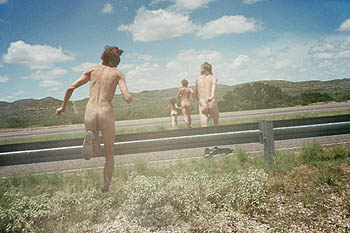By STEVE AISHMAN
Ever try to explain a joke to someone?
Confucius say he who makes love in grass, gets piece on earth.
Confucius say war does not determine who's right, war determines who's left.
Confucius say it take many nails to build crib but one screw to fill it.
Explanation: These jokes are based on double-meanings of words. Variations included puns, etc.
Problems with “Confucius say” jokes:
1) They are horribly racist.
2) They assume Confucius lacked the ability use good grammar.
3) Confucius never said any of them.
A woman gets on a bus with her baby. The bus driver says: "That's the ugliest baby that I've ever seen. Ugh!" The woman goes to the rear of the bus and sits down, fuming. She says to a man next to her: "The driver just insulted me!" The man says: "You go right up there and tell him off – go ahead, I'll hold your monkey for you."
Explanation: The joke begins with a “set-up line” alerting the audience that there will be a short story and then an unexpected climax. Variations on this include “A man walks into a bar …” etc.
There once was a Polgar named Laszlo.
A long beard he decided to grow.
It grew 8 feet long,
Because he told Paul Truong,
He'd shave when the sisters stopped raising their ELO.
Explanation: This is a chess limerick. It requires significant understanding of the world of professional chess where Laszlo Polgar, a famous chess teacher, is also the father of the “Polgar Sisters”, two sisters who raised their ELO chess ranking to the level of Grand Master by the time they were 15 years old.
The problem with explaining jokes to people is that anyone who hears the explanation may be able to intellectually understand the joke, but the joke will probably not have the correct effect. This is a fact that most people understand and thus most people do not try to explain jokes.
Most artists shy away from giving explanations of their art for the same reason that people instinctively do not explain jokes. What’s the point of explaining a piece of art to someone? Even if the listener intellectually understands the piece after the explanation, the point of the piece is usually lost.
The contemporary art world is obsessed with the production dialog. Subsequently, work that easily allows for an explanation is much more likely to be shown because people are expecting an explanation. Showing work that becomes diluted when explained has become virtually impossible. The art that people are most like to write about and discuss is work that exists primarily as an intellectual exercise. Artwork that can’t be explained (in the same way that a joke can’t be explained) ends up not being written about or by definition, ruined by the explanation.
Take, for example, art star Ryan McGinley whose latest exhibition at Team Gallery has been extensively lauded. Team Gallery’s press release says that McGinley is a “serious artist with a rare gift for creating enduring color photographs — photographs that show us the best of youth.” The best of youth? Apparently, unless you are thin and white, you are ranked lower than “the best of youth”. (I hope that no one interprets McGinley’s images as somehow representing a fantasy of youth or of by-gone youth. If so, he has constructed a race exclusive fantasy that I want nothing to do with.)
Karen Rosenberg wrote in the New York Times that McGinley’s “photographs convey the idea, rather than the experience, of spontaneity” and that the only minor problem with the images is that few of them are too large. I guess that’s true, in the same way that ads for Abercrombie + Fitch convey the idea, rather than experience of spontaneity. But, why would I go to a gallery to see McGinley’s images when I can just go to the mall?
Ryan McGinley continues to get shown because his images let people look at naked hot young people and then, most importantly, his photos allow the viewer to explain away what they are doing as looking at the beauty of youth, or fantasy of youth, etc. His work also goes beyond just allowing for an explanation, it exists so that photographs of naked hot young people can be explained as art. However, as soon as someone starts explaining that his photos may be problematic because they re-enforce a hierarchy of beauty that defines anyone who does not look like him as not “the best of youth”; all of a sudden the work is not so beautiful, but a rather ugly view of youth.
McGinley’s latest work exists for explanation, but as soon as anyone starts really explaining the work beyond the superficial, it falls apart. Of course, like I said, it’s usually not the best idea to try to explain a joke.
Note: Both Ryan McGinley and Abercrombie + Fitch are looking for models:
Here for Ryan and here for A+F.
- Ryan McGinley, Highway (from Team Gallery’s website)
- photograph from Abercrombie & Fitch advertisement
- an installation from Ryan McGinley, I Know Where the Summer Goes, at Team Gallery
"I Know Where the Summer Goes" is on view until May 3rd at Team Gallery, located at 83 Grand St., NY, NY.
All images are courtesy of Team Gallery and Abercrombie + Fitch.







